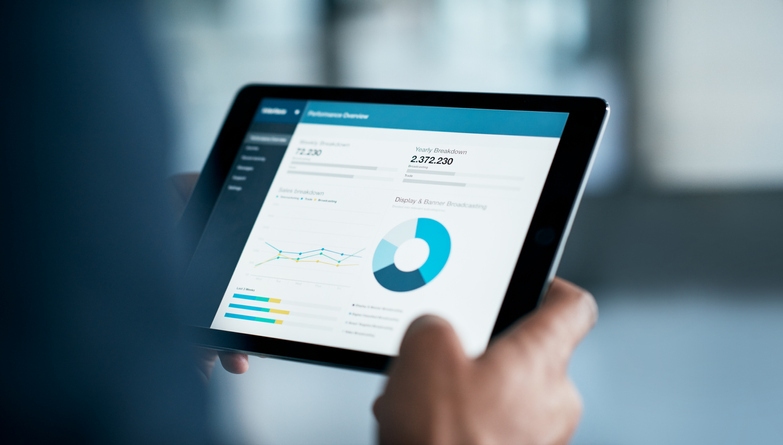4 Undervalued Features of the Best Cap Table Software
Finding the right cap table software is a big deal for a startup company. Switching to the right software is a big deal in established private companies. Cap tables get complex, fast. Moving complex data around is a major pain. That’s why finding the right tools early on is so important. It’s also why—if you do decide to find new software—it better be worth it. The nitty-gritty details of high-value software features can get buried under the gloss of marketing language, making it difficult to compare providers. When your options start to blend together, weighing the smaller differentiators can help inform or solidify your decision. Let’s take a closer look at four undervalued features that the best cap table software does well.
Cap Table Software With Granular Security Configurations
We’re starting with the basics here, but granularity matters. The best cap table software is going to give you the option to do whatever you want with your data. While it may seem obvious, extensive (user-friendly) granularity when makes a world of difference. Your equity can (will) get twisted into complex configurations as you scale your company. This complexity grows with each new financial instrument you introduce (e.g. common stocks, preferred stocks, warrants, and convertible notes). Each new form of security demands the use of different—often unique—fields of data in your cap table (e.g. anti-dilution provisions, discount percentages, and vesting schedules). The ability to accommodate any permutation of equity is easy to take for granted. However, cap table software that is unable to handle the necessary configurations specific to each security will immediately become a nuisance.
The benefits of granular cap table configurations extend beyond giving you total control over the format of your securities. Granular control over the management of your securities can streamline the burden of monitoring and maintenance. Attaching email alerts and notifications to your cap table—or to individual securities and shareholders—makes it easy to stay on top of exercise windows, expiry windows, compliance tasks, and more. Appending notes and commentary to shareholder allocations can be a useful nice-to-have for providing additional context.
Powerful Cap Table Reporting Features
The best cap table software boasts thoughtfully-engineered reporting tools which anticipate and account for your needs. Prebuilt templates for common reports are a huge timesaver. Reports that consider the obligation to comply with different regulations and tax laws (ASC 718, IRC 409A, Rule 701, etc.) spare you the headache of manually compiling the necessary information. One step up from this is the ability to generate “auditor-ready” reports. Click a button, download a report, and pass it along to whoever needs it. Easy as that. No further modifications required.
It’s important to note that your cap table software should offer some flexibility in its reporting options. Working off a pre-built template that anticipates your needs? Great. Being limited to those templates? Not so much. The best cap table software will, at a minimum, give you the power to configure a wide variety of well-designed templates—even if you can’t build a fully-customized report from scratch. When vetting software candidates, it can help to play around with some dummy data to test its reporting tools. Providers who offer a free trial or “freemium” access to their cap table software may let you import your own data. This should let you gauge both the depth of granularity and “ease-of-use” in its reporting tools; killing two birds with one stone.
Accessibility in Cap Table Software
We’re admittedly stretching the definition of “accessibility”, here. Bear with us. When we say “accessibility”, we really mean “accessibility, portability, and security”. It’s about making sure the right people and platforms can access your data and the wrong ones cannot. The indicators of secure cap table software are fairly clear-cut. SOC II compliance, a GDPR-compliant privacy policy, and other such items in the standard palette of cybersecurity best practices are often enough to earn your IT manager’s blessing. Accessibility and portability are where things get a little more nuanced.
Great cap table platforms pride themselves on portability. Whether it’s through an app or responsive web design, you must have access to your data on any device. Failing to deliver on cross-device compatibility is a red flag; a sign of software providers struggling to keep up with the times. This should be a no-brainer. Also a no-brainer? Sharing data with auditors, investors, employees, and shareholders with a single click.
Beyond that, however, the best cap table software allows you to restrict visibility and editing permissions for your entire cap table as well as individual data sets. The “experience” of importing, exporting, or modifying data into, out of, or within your cap table software should be simple and smooth. Let’s unpack what “experience” means in this context. It means that updates to your cap table data, when saved, are immediately applied throughout the platform—instantly available to all users; in every model; on every report. It means accommodating a versatile range of file formats so you’re not stuck reformatting and remapping data as it flows into and out of the platform.
Great accessibility means exploring historical data and navigating version control functionality with ease. A user-friendly interface and intuitive experience means everything here. You shouldn’t spend hours hunting through previous versions correcting minor changes, spotting minute inconsistencies, or otherwise searching for needles in the haystack. On the surface, this may all seem like a jumble of smaller features and functions anchored in accessibility and portability. Together, they comprise a top-tier experience that makes the difference between a power user and one who dreads using their cap table software.
In-Platform Modeling and Analysis Tools
One of the most undervalued features the best cap table software has in common is its analysis and modeling capabilities. And yes, we’re lumping the two together. In some sense, these tools serve as your “crystal ball”; giving you a glimpse into the future of your company’s equity. The ability to model what-ifs and run waterfalls straight from your cap table platform is a bigger deal than you think. It’s easy to see this as a nice value-add—rather than a core function—of your software. At face value, the benefits are obvious. Founders and executives are given insight into how their equity might be diluted before raising new capital. Investors feel secure in knowing how they’ll fare in a liquidation event, IPO, acquisition, etc. But when you scratch a little deeper, the advantages of integrating modeling and analysis tools directly into your data source run far beyond what most would expect.
No matter how efficiently your software streamlines the process of exporting data, manually downloading the contents of your cap table and uploading it to an external modeling or analysis tool will get old. Fast. Especially when you have to rinse, lather, and repeat every time your cap table changes. Good cap table software will offer an API, connecting your data to popular third-party modeling tools and sparing you from the horror of manual updates. However, the best cap table software empowers users with modeling and analysis features powerful enough to meet the needs of executives and investors alike without forcing them to rely on more robust external products. Nothing puts a user in the driver’s seat like having everything you need in one place.
Conclusion
Keep an eye out for these undervalued features when weighing your options in cap table software providers. They’ll come in handy when more widely-advertised features start to blend together. The best cap table software nails these elements, demonstrating an attention to detail and commitment to user-friendliness which percolates up to higher-value selling points. You don’t need a platform that sells itself as “cap table software for everyone”. You need “cap table software for you”. Assessing the extent to which these undervalued features meets your unique needs is a great first step in finding the perfect fit.



